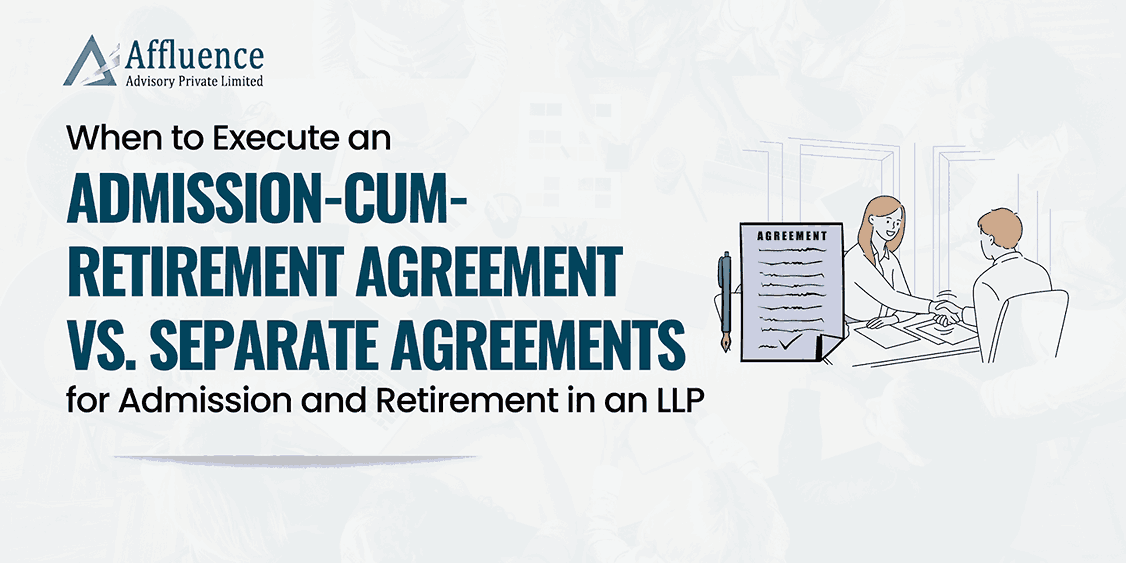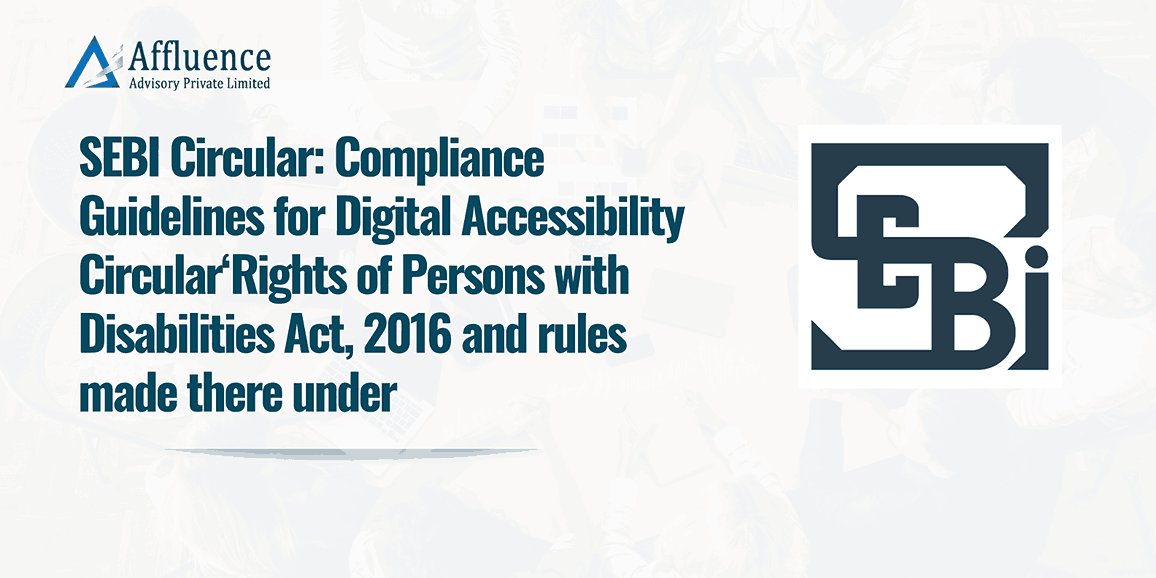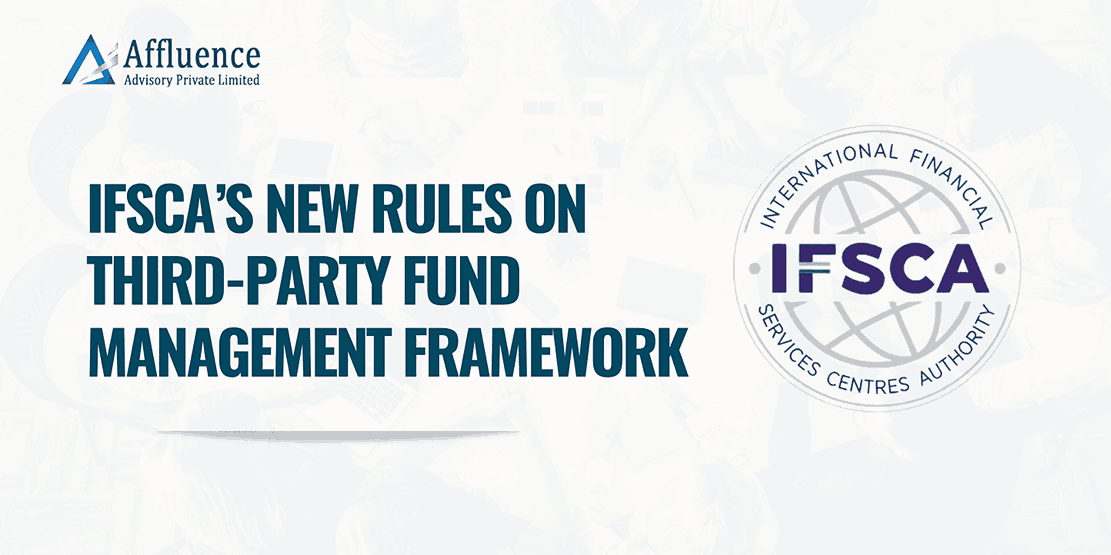Introduction:
The flexibility of a Limited Liability Partnership (LLP) allows for changes in its partnership structure, including the admission of new partners and the retirement of existing ones. However, the way these changes are documented and formalized is important to ensure legal clarity, confidentiality, and proper governance. Typically, these changes are executed through an Admission Agreement for new partners and a Retirement Agreement for outgoing partners. But in certain scenarios, a combined Admission-cum-Retirement Agreement may be preferable.
In this article, we will examine the scenarios when it is better to execute a single Admission-cum-Retirement Agreement versus when it is advisable to draft separate agreements for admission and retirement, particularly in situations involving family members versus non-family investors.
Understanding the Types of Agreements:
Admission-Cum-Retirement Agreement: This agreement combines the clauses for the admission of new partners and the retirement of outgoing partners in a single document. It is most suitable in cases where both events occur simultaneously, making it more streamlined and efficient to document all changes at once. Also when family members are involved in the LLP Structure or there is no need of any confidentiality then in such cases it is advisable execute single Admission Cum Retirement Agreement.
Separate Admission Agreement and Retirement Agreement: These are individual agreements, one for the admission of new partners and the other for the retirement of existing partners. Each Agreement addresses the specific terms related to the respective actions and is usually executed separately for greater specificity.
Also Read: LLP (Third Amendment) Rules, 2023 bring in its purview Maintenance of Register of Partners & applicability of SBO provisions
When to Execute an Admission-Cum-Retirement Agreement:
Involving Family Members as Partners: When family members are partners in the LLP, it is often the case that one or more family members may retire, while others may be admitted as partners. In such instances, a single Admission-cum-Retirement Agreement is typically sufficient because:
- No Confidentiality Concerns: Since the partners are family members, there is usually no need to maintain strict confidentiality between the outgoing and incoming partners regarding the terms of their admission or retirement. All changes are well-understood within the family context.
- Efficiency: It simplifies the documentation process, as all the changes are covered under one agreement. It reduces paperwork and potential confusion, as both admission and retirement processes happen together.
For Simplicity and Streamlining: When multiple family members are involved and the changes are related to both the entry and exit of family members in the LLP, a combined agreement avoids the need for multiple legal processes, making the transition smoother and more cost-effective.
When to Execute Separate Admission and Retirement Agreements:
Involving Non-Family Members/External Investors: If the LLP involves non-family members or external investors, the dynamics change. In such cases, it is generally advisable to execute separate Admission and Retirement Agreements for the following reasons:
- Confidentiality Concerns: When external investors or non-family partners are involved, there may be sensitive financial terms, capital structures, or business strategies that should not be disclosed to retiring partners. Disclosing the terms related to the admission of new partners in the retirement agreement could breach confidentiality, especially when the new partner’s terms or capital contribution are sensitive and should not be shared with outgoing partners.
- Greater Clarity and Control: Separating the agreements ensures that each process is clearly defined. The terms for the retiring partner can be addressed independently from the new partner’s admission, allowing for more precise and focused management of both transitions. This also allows the remaining partners to manage each transition separately, ensuring that the terms for the new partner are not complicated by the retirement process.
Complex Terms of Admission and Retirement: When there are complex arrangements regarding the buyout or compensation for retiring partners, as well as intricate terms of admission for new partners (especially in the case of large or significant investors), separating the agreements helps ensure that all conditions are clearly articulated without causing confusion or overlap.
Pros and Cons:
Admission-Cum-Retirement Agreement:
- Pros:
- Simpler and more efficient when changes involve family members or when the transitions are straightforward.
- Reduces paperwork and legal formalities, saving time and cost.
- Easier to execute when there is mutual understanding among the parties.
- Cons:
- Not ideal for situations involving external investors due to potential confidentiality concerns.
- Might lack the specificity required for more complex or high-value changes, such as in a business with multiple stakeholders.
Separate Admission and Retirement Agreements:
- Pros:
- Provides confidentiality and protects sensitive information, especially in non- family or external investor contexts.
- Allows for more detailed and focus on each matter, ensuring clarity and precision.
- Cons:
- More paperwork and legal procedures are involved, which may increase time and costs.
- Can be more complex to manage when multiple changes happen at once.
Conclusion:
The decision between executing a combined Admission-cum-Retirement Agreement and separate Admission and Retirement Agreements depends on the nature of the partners involved, the complexity of the changes, and the need for confidentiality.
- If the LLP consists primarily of family members or closely aligned partners, a combined Admission-cum-Retirement Agreement is often the most efficient and practical approach. It simplifies the process, reduces administrative burden, and fosters a clearer understanding among partners.
- However, if the LLP has external investors or non-family members, separate agreements are typically the best route to maintain confidentiality and ensure that the terms of admission and retirement are appropriately managed without unnecessary disclosure.
Ultimately, the choice should be based on the unique dynamics of the LLP and the nature of the changes being made. Whether you opt for one combined agreement or two separate ones, ensuring clarity and alignment among all parties involved is the key to a smooth transition.
Disclaimer:This article provides general information existing at the time of preparation and we take no responsibility to update it with the subsequent changes in the law. The article is intended as a news update and Affluence Advisory neither assumes nor accepts any responsibility for any loss arising to any person acting or refraining from acting as a result of any material contained in this article. It is recommended that professional advice be taken based on specific facts and circumstances. This article does not substitute the need to refer to the original pronouncement.
CLICK HERE DOWNLOAD PDF











